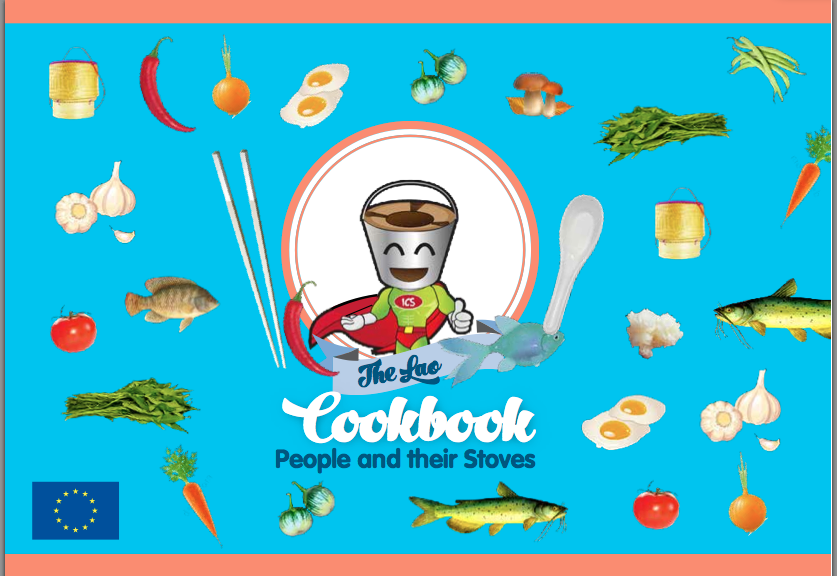
[dropcap]The[/dropcap] www is quite an incredible place, isn’t it? A smorgasbord of data and information right there before our eyes. In essence, it reflects all the facets of the real world – every possibility, field of info, hobby, news/data that exists is there on the web ready to be shared. With so much info out there, it’s easy to get lost and sometimes difficult to find what we want. Sometimes though, it’s fascinating what wonderful news/info we stumble upon. Recently, while searching for Lao cookbooks, I came across some rather interesting info that I want to share with you – the Improved Cookstoves (ICS) Programme in Laos.
In Laos (Lao PDR), most families prepare their meals two to three times a day, and households often use traditional-style cookstoves called “tao”, which use wood and charcoal. These “tao” provide both cooking and heating needs. A 2011 report indicates that cooking fuel accounts for 70% of the nation’s energy consumption. This proves costly to the community and the environment in several ways, including the creation of indoor air pollution (that causes the premature death of 2,600 people each year), and considerable contribution to green house gas emissions. 1
Recognizing these challenges – since 1997, initiatives have taken place to promote improved cookstoves known as the “Tao Payat Stove” or the “Savings” Stove. In 2010, an in-depth research on the cookstove sector indicated challenges at all levels of the ICS value chain (producers, retailers and consumers). Based on the recommendations and findings of the study, and following a pilot phase (2011-2012), the proposed Action entails scaling up the ICS programme, providing a robust platform for replication and application of best practices. This initiative has received positive support from the government, community, and stakeholders. 2 It is financed by the SWITCH-Asia programme in partnership with SNV, Oxfam Novib and the Blue Moon Fund. 3
The overall objective of the programme is to contribute towards poverty alleviation in Laos through the development of a sustainable ICS chain which promote the efficient use of wood and charcoal, and lower greenhouse gas emission. 4 The programme could reduce greenhouse gas emissions in the period of 2014-2016 by 150,000 tons. 5 By the end of 2016, the goal of the programme is that the sustainable production and consumption of ICS is well established (with 50% of the market share of cookstoves), and the target consumers in the five target provinces will have better awareness and access to purchase the ICS, as an affordable and high quality alternative to the traditional cookstoves. 6
A booklet titled “The Lao Cookbook – People and their Stoves”, which briefly profiles the ICS programme in an eye catching/easy to read manner for a very general public has also been recently released (January 2014). The booklet is printed in both English and Lao, and contains a delicious traditional “larb” recipe that you can make with your new improved “tao payat”! smile
So what makes the ICS so much better than traditional cookstoves? The improved cookstoves are made from quality materials which have been thoroughly tried and tested in laboratories. They have an efficiency of 39% 8 and uses up to 20% less wood and charcoal than traditional stoves. 9 To date, many tests have been conducted and all indicate similar conclusions – “the improved cookstove is by far the most efficient”. 10 As an example – from the booklet, Ms Khampheng has four stoves – one is the new improved cookstove, one is a traditional “tao payat” and two are “tao lo”. She states:
“I like this new improved cookstove for two reasons. It saves charcoal every time I cook, and it boils water faster. I know which stove I will buy next time!” 11
If you live in Laos, have you seen these new improved “tao payat” around, or do you own one? If so, what do you think of them? You can find more info about the Improved Cook Stoves (ICS) Programme via the following links.
Websites:
http://www.icslao.info/
http://www.snvworld.org/en/countries/laos/our-work/projects/improved-cook-stoves
http://normai-site.org/ics/
http://www.switch-asia.eu/switch-asia-projects/project-impact/projects-on-designing-for-sustainability/cook-stoves-programme-laos.html
Facebook: https://www.facebook.com/improvedcookstoves
YouTube: http://www.youtube.com/user/ICSARMI
Contact: Bastiaan Teune – bteune@snvworld.org
Notes:
- Reference: http://www.icslao.info/index.php?option=com_content&view=article&id=64&Itemid=282. ↩
- Reference: http://www.icslao.info/index.php?option=com_content&view=article&id=64&Itemid=282. ↩
- Reference: http://www.snvworld.org/en/countries/laos/our-work/projects/improved-cook-stoves. ↩
- Reference: http://www.icslao.info/index.php?option=com_content&view=article&id=64&Itemid=282. ↩
- Bastiaan Teune, Sector Leader Renewable Energy, SNV Lao PDR is quoted saying, “This is equal to the emissions of 20,000 passengers flying from Vientiane to Amsterdam and back.” (Reference: http://www.snvworld.org/en/countries/lao-pdr/news/ics-in-local-newspapers-cooking-hot-to-keep-the-climate-cool. ↩
- Reference: http://www.icslao.info/index.php?option=com_content&view=article&id=64&Itemid=282. ↩
- Reference: “The Lao Cookbook – People and their Stoves” (Vientiane, January 2014), Publisher:
SNV Lao PDR. ↩ - Efficiency is the percentage of fuel energy a cookstove is able to transfer to the pot. Reference: “The Lao Cookbook – People and their Stoves” (Vientiane, January 2014), Publisher:
SNV Lao PDR. ↩ - Reference: http://www.snvworld.org/en/countries/laos/our-work/projects/improved-cook-stoves. ↩
- Reference: “The Lao Cookbook – People and their Stoves” (Vientiane, January 2014), Publisher:
SNV Lao PDR. ↩ - Reference: “The Lao Cookbook – People and their Stoves” (Vientiane, January 2014), Publisher:
SNV Lao PDR. ↩